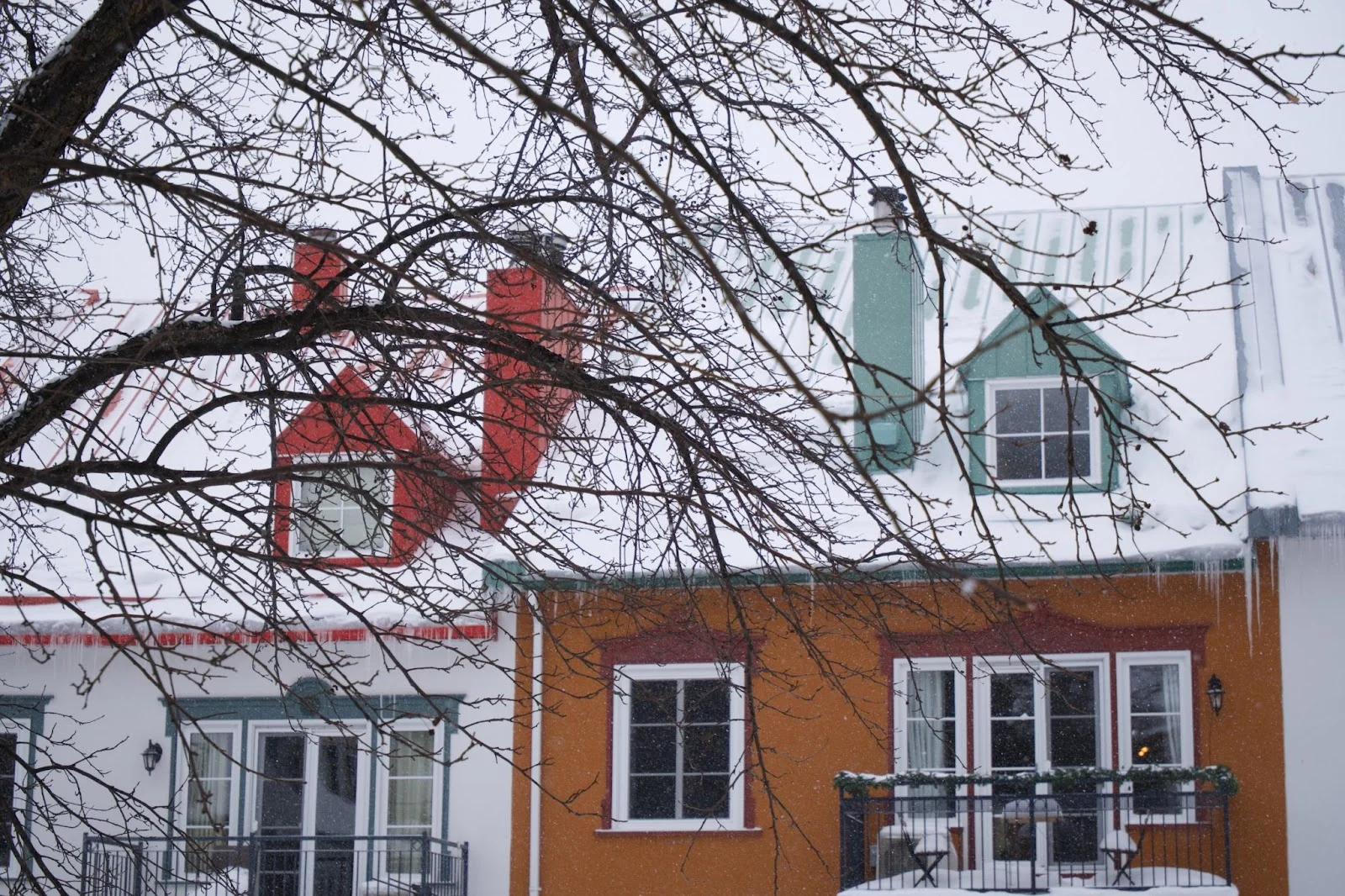As the weather begins to cool down in Utah, we become focused on the fall foliage and pretty colors. However, it’s important to remember that autumn is brief, and you’ll need to start thinking about winter and snow soon.
Winter will soon blanket the world in a pristine layer of snow and add a certain magic to the air. But behind this serene facade lies a potential danger to our homes. Snow, while beautiful, can exert significant pressure on rooftops, which, if not managed properly, can lead to costly damages and even structural failure.

Snow on Roofs Can Be A Good Thing
Seeing snow on the roof can be a cause for concern, but it is actually a positive thing.
If snow doesn’t melt quickly, it means that heat isn’t escaping from your attic and transferring to your roof. However, heat transfer through the roof is not as you might think.
Melted snow will refreeze when it reaches the gutters and edges of your roof, which are colder. This creates an Ice Dam where a solid ridge starts to form along the edge of your roof. The blocks of ice that form can cause roof damage and leaks, so it’s good to know your roof doesn’t produce them.
The Weight of Snow
Snow is deceptively heavy.
The weight of snow on your roof depends on factors like snow density, moisture content, and the depth of accumulation. On average, one cubic foot of dry, fluffy snow weighs about 7 pounds.
In contrast, wet, heavy snow can weigh up to 20 pounds per cubic foot or more. Now imagine the collective weight of all that snow covering your entire roof for an extended period. It’s easy to see how this can become a significant concern.
How Snow Can Affect Roofs
These are some of the different ways snow can affect your roof.
- Roof Stress
When a heavy snow load accumulates on your roof, it places added stress on the structural integrity of the building. Over time, this can lead to sagging or even a roof collapse if the load becomes too great.
- Ice Dams
Snow on your roof can melt due to heat escaping from your home’s interior or warming daytime temperatures. This melted snow can then refreeze at the eaves, creating ice dams. These ice dams can damage the roofing material, gutters, and even lead to leaks in your home.
- Leaks and Water Damage
As snow melts, it can infiltrate your roof’s vulnerable points—such as shingles, flashing, or vents. This can lead to leaks that damage your ceiling, insulation, and even your home’s structural framework.
- Gutter Damage
The weight of snow and ice can damage gutters, causing them to pull away from the house roofline. This not only impairs their functionality but also poses a safety hazard.
How To Protect Your Roof from Snow Damage
Being proactive and smart is the key to properly protecting your roof during the next winter weather season. Here are a few ways you can get ahead of snow damage.
- Roof Inspection
Getting regular roof inspections can help identify potential weak spots or damaged areas before the snow season. Repairing these issues in advance can prevent further damage.
- Snow Removal
Safely removing snow from your roof can help mitigate the weight load. Professionals should only do this, as amateur attempts can lead to injuries or further damage. So, make sure to hire a roofer to remove snow from your roof.
- Insulation and Ventilation
Proper insulation and attic ventilation can prevent ice dams by maintaining a consistent roof temperature. Adequate ventilation of warm air helps dissipate heat, reducing the risk of snow melting and refreezing.
- Reinforced Roofing
In regions with heavy snowfall, like Utah, consider installing a roof designed to withstand snow loads. This includes roofs with a steeper pitch and reinforced structures.
- Ice Dam Prevention
Install heating cables or ice melt systems along your roof’s eaves to prevent ice dams from forming.
Final Thoughts
Snow can be a beautiful winter wonderland, but it can also threaten your home’s structural integrity and safety.
Understanding how snow affects roofs, and taking proactive measures to protect your investment, will allow you to enjoy winter without having to worry about snow weighing down on your roof.

Jessi is the creative mind behind The Coffee Mom, a popular blog that combines parenting advice, travel tips, and a love for all things Disney. As a trusted Disney influencer and passionate storyteller, Jessi’s authentic insights and relatable content resonate with readers worldwide.
